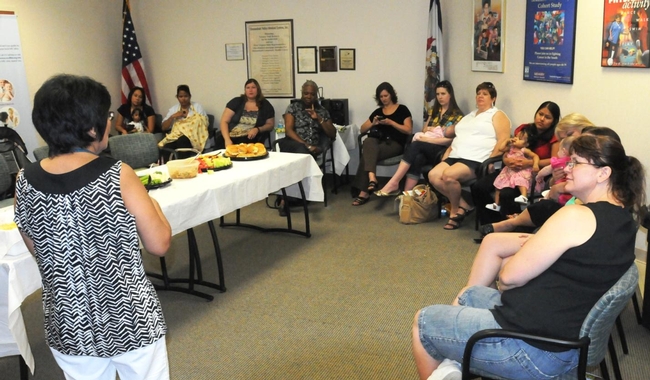Posts Tagged: Lauren Au
Food insecurity and childhood obesity: Is there a connection?
A well-nourished population requires that all members of society have access to sufficient amounts of nutritious food. Unfortunately, food insecurity continues to be a staggering problem throughout the world with negative consequences in terms of health and well-being.
In the United States, millions of households, an estimated 1 in 8 Americans, lack access to enough food. Children growing up in food insecure households face many challenges, such as behavioral problems, lower academic achievement, disrupted social interactions and poor health. The prevailing belief is that children living in a food insecure environment are at greater risk of undernutrition, not obesity. Although this may be true in some cases, food insecurity and childhood obesity also coexist.
Because childhood food insecurity may increase obesity risk later in life, it is important to better understand the relationship between food insecurity and children's obesity, and how it varies by demographic characteristics in the United States.
A recent study published in the September 2019 issue of The Journal of Nutrition assessed the relationship between household food insecurity and child adiposity-related outcomes. This included variables such as body mass index, waist circumference and diet outcomes. The study, conducted by Lauren Au, a researcher at UC Agriculture and Natural Resources' Nutrition Policy Institute, and colleagues examined associations by age, sex, and race/ethnicity. Data collected in 2013-2015 from 5,138 U.S. schoolchildren ages 4-15 years old from 130 communities in the cross-sectional Healthy Communities Study were analyzed.
Household food insecurity was self-reported using a two-item screening instrument and dietary intake was assessed using a food frequency questionnaire. Information on dietary behaviors, physical activity and demographics was collected. To assess adiposity, children's weight, height and waist circumference were measured.
Study results support an association between food-insecure households and measures of adiposity. Children from food-insecure households had high body mass index, waist circumference, greater odds of being classified as overweight or obese, consumed more sugar from sugar-sweetened beverages, and less frequently ate breakfast and dinner with family compared to children from food-secure households. When examined by age groups, significant relationships were observed only for older children, however, results did not differ according to sex or race/ethnicity.
These results suggest that household food insecurity is associated with higher child adiposity-related outcomes and several nutrition behaviors, particularly among older children. Clearly, further research is needed to better understand the complexities of food insecurity, childhood obesity, and future health outcomes.
Read the full open access article.
This research was supported by the National Heart, Lung, and Blood Institute, part of the National Institutes of Health.
Both in-person and online nutrition education are effective for teaching WIC participants
Established in 1974, the Special Supplemental Nutrition Program for Women, Infants and Children (WIC) is the only federal nutrition program that provides education and counseling to recipients who receive assistance to buy nutritious foods. Depending on the learning style and time restraints of the recipients, however, staying at the WIC center for training and counseling can be a barrier for participation.
The researchers, who are part of UC ANR's Nutrition Policy Institute (NPI), showed that lessons about the importance of eating a healthful breakfast everyday were as effective when presented in person as they were when the participant completed the class on a smart phone, tablet or computer.
“Access to the Internet has rapidly increased in the United States,” said Lauren Au, NPI assistant researcher and lead author of the research article. “To our knowledge, however, the effectiveness of online vs. traditional classes in delivering nutrition education in WIC has never before been studied in a randomized trial.”
The researchers selected breakfast as the lesson topic because it had not been taught before as part of WIC nutrition education even though there is ample evidence to show that regularly eating breakfast is associated with a higher quality diet and decreased risk for obesity.
During the online and classroom training, participants learned why skipping breakfast can lead to poorer health for children and adults and how WIC foods – such as fruit, vegetables, milk, and whole grain cereals– can be used to make healthy breakfasts. Each of the participants was asked to set personal goals for eating healthy breakfasts and making sure their children did as well.
Before the classes began, the participants took a pretest to gauge their knowledge on the topic, and immediately after the class, the test was administered again. Two to four months later, follow up assessments were made to determine whether the participants breakfast behavior had changed and whether they remembered important facts from the training.
“All the participants increased and retained knowledge about how much juice WIC recommends per day – no more than half a cup – and how much sugar per serving of cereal is recommended – no more than 6 grams,” Au said.
Au said the researchers were pleased to confirm that online education is an effective supplement to in-person training.
“Both education types have advantages and disadvantages,” she said. “There's group peer support in the in-person education, and that can be a very powerful motivator. WIC appointments can be faster with online education, which can provide more flexibility and convenience. Both of these education approaches are incredibly beneficial for promoting healthy dietary behavior in WIC participants.”
A six-minute interview with Au about the research project may be viewed online.
An initiative to maintain and enhance healthy families and communities is part of the UC Division of Agriculture and Natural Resources Strategic Vision 2025.



